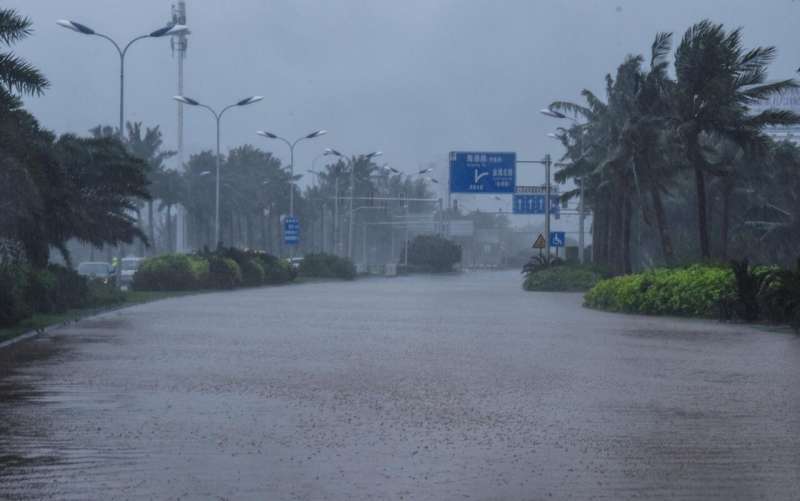Extreme STP events may cause flooding, landslides and debris flow. Credit: screenshot from a surveillance video in Haikou, Hainan, with permission from the local meteorological administration.
Sideswiping tropical cyclones (STCs) are tropical cyclones (TCs) that cause precipitation over land without making landfall. STC precipitation (STP) can constitute a severe meteorological disaster leading to devastating impacts on the environment and society. STCs make a significant contribution to the total inland precipitation associated with TCs, and therefore could produce extreme rainfall events not only in coastal regions but also in inland areas far away from the coastline.
"Generally, STP is related to STC frequency, intensity, and the minimum sideswiping distance," explains Dr. Fumin Ren, a researcher at the State Key Laboratory of Severe Weather, Chinese Academy of Meteorological Sciences, and one of the authors of a recently published study.
STCs become severe when they experience synergetic interaction with local orography and large-scale disturbances. "More detailed studies should be conducted to understand the impacts of large-scale flows, TC structures, and underlying surface conditions on the distribution and amount of STP, especially associated with extreme STP events, which often cause flooding, landslides and debris flow," says Dr. Ren.
By using data from the China Meteorological Administration (CMA), Dr. Ren and his team—a group of researchers from the Key State Laboratory of Severe Weather, Chinese Academy of Meteorological Sciences—have had their findings published in Advances in Atmospheric Science. They found that the distribution of STPs includes extreme STP events that appear not only over island and coastal areas, but also over inland areas such as Zhumadian of Henan Province, due to the amplification of local terrain on convection and rainfall, and the influence of favorable large-scale forcing.
"There are indeed numerous issues that are worthy of further investigation. This study is merely the beginning of studying STCs and STPs affecting China. In our future studies, we plan to examine the asymmetrical distribution of STPs and the differences between STPs and landfalling tropical cyclone precipitation, and then compare the associated statistics to those based on other best-track data, such as the IBTrACS data," concludes Dr. Ren.
More information: Tian Feng et al, Sideswiping Tropical Cyclones and Their Associated Precipitation over China, Advances in Atmospheric Sciences (2020). DOI: 10.1007/s00376-020-9224-5
Provided by Chinese Academy of Sciences
























